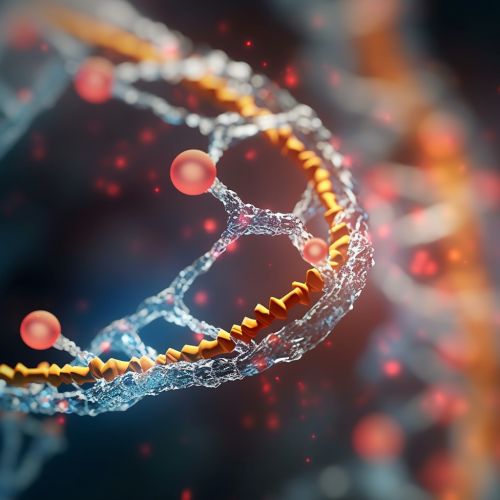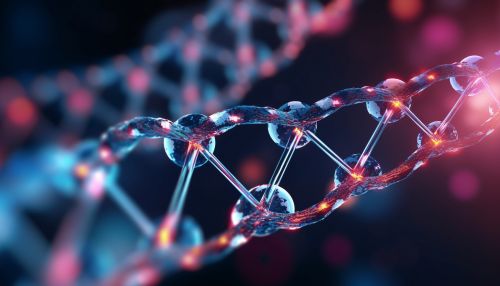Promoter
Overview
A promoter is a region of DNA that initiates transcription of a particular gene. Promoters are located near the transcription start sites of genes, on the same strand and upstream on the DNA (towards the 5' region of the sense strand). Promoters can be about 100–1000 base pairs long.
Function
The promoter mediates the binding of RNA polymerase and other transcription factors that regulate the initiation of transcription. The sequence of the promoter region controls the binding of the RNA polymerase and transcription factors, and thus the rate of transcription. The specific sequence of a promoter is very important because it determines whether the corresponding gene is transcribed all the time, some of the time, or infrequently.
Structure
Promoters are composed of specific DNA sequences that provide a secure initial binding site for RNA polymerase and for proteins called transcription factors that recruit RNA polymerase. These transcription factors have specific activator or repressor sequences of corresponding nucleotides that attach to specific promoters and regulate gene expression.


Types of Promoters
Promoters can be classified into two types based on their association with the gene that they regulate.
Proximal Promoters
Proximal promoters are the most common type of promoters that are located proximally to the genes they regulate. They are typically upstream from the transcription start site (TSS) and can be recognized by specific transcription factors to initiate transcription.
Distal Promoters
Distal promoters are located more distantly from the genes they regulate. They can be upstream or downstream from the TSS and can regulate gene expression from a distance.
Promoter Sequences
Promoter sequences are DNA sequences that define where transcription of a gene by RNA polymerase begins. They can also be referred to as motifs. There are several known motifs including the Pribnow box, and the -35 sequence in prokaryotes and the TATA box, CAAT box and GC box in eukaryotes.
Pribnow Box
The Pribnow box (also known as the Pribnow-Schaller box) is the sequence TATAAT of six nucleotides (thymine, adenine, thymine, adenine, adenine, thymine) that is an essential part of a promoter site on DNA for transcription to occur in bacteria. It is an idealized or consensus sequence - that is, it shows the most frequent nucleotide at each position in a sequence alignment of related sequences.
-35 Sequence
The -35 sequence in bacterial and archaeal promoters is recognized by sigma-70 in group 1 sigma factors. It is located 35 base pairs upstream of the transcription start site. The consensus sequence is TTGACA.
TATA Box
The TATA box is a DNA sequence (cis-regulatory element) found in the promoter region of genes in archaea and eukaryotes. It is a type of promoter sequence, which specifies to other molecules where transcription begins.
CAAT Box
The CAAT box is a distinct pattern of nucleotides with GGCCAATCT consensus sequence that occur upstream by 60-100 bases to the initial transcription site. The CAAT box signals the binding site for the RNA transcription factor, and is typically accompanied by a conserved consensus sequence.
GC Box
The GC box is a regulatory sequence in many eukaryotic genes. It is a region of DNA that is rich in guanine (G) and cytosine (C), typically upstream of the promoter region.
Regulation
The promoter's role in initiating transcription is crucial for the regulation of gene expression. Regulation of promoters impacts cell function and development, and can have effects on disease states.
